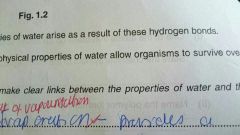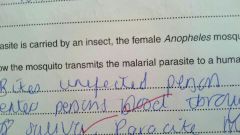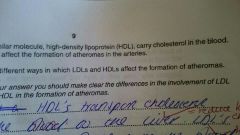![]()
![]()
![]()
Use LEFT and RIGHT arrow keys to navigate between flashcards;
Use UP and DOWN arrow keys to flip the card;
H to show hint;
A reads text to speech;
22 Cards in this Set
- Front
- Back
|
Bond between amino acids |
Peptide bond By condensation reaction H from aime group and OH from carboxyl group |
|

Properties of water |
HIGH LATENT HEAT OF VAPORISATION - (large amount of energy to turn into had), efficient cooling method (sweating) HIGH SPECIFIC HEAT CAPACITY = thermally stable habitat, less energy spent on heat ICE LEES DENSE - remains liquid under = stable habitat COHESION (efficient water movement) transpiration stream HIGH DENSITY - allows floatation |
|
|
Hydrogen bonding (biological molecules) |
Proteins (primary & secondary structures) Between cellulose chains |
|

|
Mosquito is the vector Bites uninfected person Parasite moves into blood from vectors saliva Reproduce in person |
|
|
Issues with insecticides |
Can develop resistance Morally wrong |
|
|
Sampling insects |
Use sweep nets Randomly Test large numbers of samples Attain mean |
|
|
Role of cholesterol |
Stabilise membranes Waterproofing Hormones |
|
|
LDL |
Cholesterol ➕ lipids ➕ protein |
|

Atheroma formation |
HDL 's transport cholesterol from tissues to liver So reduce blood cholesterol level LDL 's transport cholesterol from liver to tissues Increase blood cholesterol level LDL contribute to atheroma formation by depositing lipids in artery wall during transportation Can form plaques HDL reduce atheroma formation by removing lipids and cholesterol from the blood So reduced fat deposition Decreased risk of plaque |
|
|
Red meat = high blood cholesterol |
High saturated fats Increased amounts of lipids in blood |
|
|
Term that describes evolutionary relationships |
Phylogeny |
|
|
Domains |
Archaea (prokaryotes) Bacteria, Eukaryotes |
|
|
Variation |
Difference Between species |
|
|
Reasons for variation |
Environmental Generic |
|
|
Speciation |
Groups separated Selection pressure Mutation causes variation Breeding within groups for time Then different so can't interbreed |
|
|
Why conservation of plants is important |
Habitats for animals Generic reasource Part of food chain |
|
|
Advantages of seed banks |
Plants not harmed Stored more seeds in a smaller area Less susceptible to disease |
|
|
Why is important to collect seeds from a speices from different areas |
To maintain generic variation (some may have natural immunity to a disease = more plants will survive) Reduces chances of inbreeding |
|
|
Why antibiotic resistant bacteria is a concern |
Antibiotics no longer effective Potential for epidemic |
|
|
How fossil evidence supports evolution theory |
Change in body structures over time Can be dated Show general trends |
|
|
Constant region (antibody) |
Bonds to phagocyte |
|
|
Variable region (antibody) |
Bonds to antigen |

